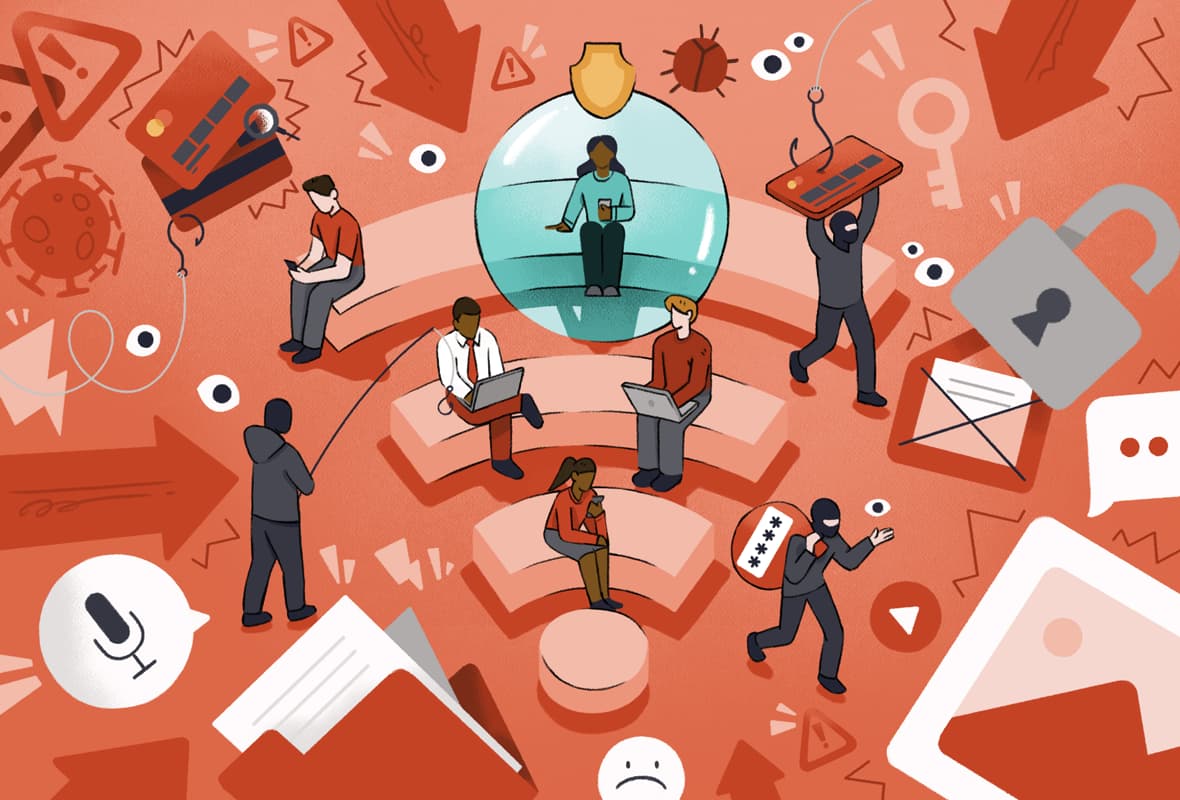Free Wi-Fi at cafes, airports, malls, or railway stations can feel like a lifesaver—especially when you’re running low on data. But have you ever wondered if your personal information is safe when you connect to these networks?
In 2025, the use of public Wi-Fi continues to rise across India, and while convenience is great, public networks come with real risks. Many people don’t realize that using open Wi-Fi could expose their data to hackers, trackers, or even malware without any obvious warning signs.
So, before you connect to that free network again, here’s everything you need to know about the real dangers of public Wi-Fi—and how to stay protected while staying connected.
Public Wi-Fi refers to wireless networks that are available for use by the general public. These networks are usually open, meaning anyone can connect without a password.
You’ll often find public Wi-Fi in:
- Cafes and restaurants
- Airports and railway stations
- Hotels and shopping malls
- Hospitals and offices
- Educational institutions
While convenient, these networks are often unsecured, which means your online activity can potentially be visible to others on the same network.
When you connect to an open network, your device communicates with the router through unencrypted channels (unless you’re using secure apps or services). This gives cybercriminals several ways to access your data.
Here are the most common risks:
Hackers can intercept data being exchanged between your device and the internet. This could include login credentials, personal messages, or credit card details.
A hacker can set up a rogue hotspot with a name like “Free Airport Wi-Fi” to trick users into connecting. Once connected, they can monitor and steal data without your knowledge.
Even without hacking into your device, someone on the same network can use tools to monitor unencrypted traffic—such as websites you visit or files you download.
Some hackers can push malicious software onto your device once you’re connected to the same public network, especially if your device’s security is outdated.
If you’re logged into an account and using public Wi-Fi, attackers can hijack your session using stolen cookies and impersonate you.
Using public Wi-Fi without precautions can put the following at risk:
- Email and social media credentials
- Bank and UPI login details
- OTPs and two-factor authentication tokens
- Personal documents and photos
- Conversations from messaging apps
- Browsing habits and location data
Basically, anything that’s not encrypted could be exposed.
Not all public Wi-Fi is dangerous, but here are signs you should be cautious:
- No password is required to join
- The network name is vague or suspicious (e.g., “FreeWiFi123”)
- Your device shows a warning like “Unsecured network”
- You’re prompted to install unknown apps or certificates
- Internet connection is unusually slow or unstable
If you see any of these red flags, it’s better to disconnect.
If you need to use public Wi-Fi, here are practical ways to protect yourself:
A VPN encrypts your internet traffic, making it unreadable to hackers or third parties. Even on unsecured Wi-Fi, a good VPN hides your activity and location.
Don’t access online banking, government portals, or any app containing personal health or financial info while on public Wi-Fi.
Make sure your device doesn’t automatically connect to any open network. This prevents you from unknowingly joining a risky network.
Check that the websites you visit start with https://. The “S” stands for “secure,” meaning the data is encrypted between you and the site.
Outdated software is more vulnerable to attacks. Regular updates fix known security flaws, so always keep your operating system, apps, and antivirus up to date.
For any account that supports it—email, social media, banking—enable 2FA. Even if someone steals your password, they won’t be able to log in without the second layer of verification.
Public Wi-Fi is not the place to have file sharing enabled. Turn it off in your settings and also disable Bluetooth if you’re not using it.
If you have mobile data available, your personal hotspot is much safer than public Wi-Fi. Use it especially when accessing sensitive information.
You might think that Wi-Fi with a password (like in a hotel or café) is secure—but that’s not always the case. If dozens or hundreds of people are using the same password, it’s still an open environment.
While slightly better than a truly open network, shared-password Wi-Fi doesn’t offer real protection. The same risks apply, especially if the router’s security protocols are outdated.
If you suspect suspicious activity after using public Wi-Fi:
- Immediately disconnect from the network
- Change passwords to important accounts, especially banking and email
- Scan your device with antivirus or anti-malware software
- Log out of all active sessions
- Check bank accounts for unusual transactions
- Enable 2FA if you haven’t already
It’s always better to act fast than wait for a serious breach to occur.
Public Wi-Fi is a useful tool in today’s connected world, especially in a country like India where free networks are popping up everywhere. But that convenience often comes with hidden risks.
Being cautious, using the right tools like VPNs, and following basic digital hygiene can keep your information safe even in risky environments. In 2025, protecting your data is just as important as staying online.
So the next time you connect to a free network, ask yourself: is the speed worth the risk? With the right precautions, you can enjoy both safety and speed—without compromise.
